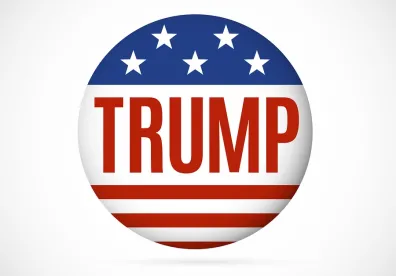Among his first acts on Inauguration Day, President Trump signed an Executive Order entitled “Minimizing the Economic Burden of the Patient Protection and Affordable Care Act Pending Repeal.” That same day, the White House also issued a memorandum to the heads of executive departments and agencies entitled “Regulatory Freeze Pending Review.” The Regulatory Freeze Memorandum directs that, except for “emergency situations or other urgent circumstances relating to health, safety, financial, or national security matters,” no new regulation may be sent to the Office of Federal Register (OFR) until a department or agency head appointed or designated by President Trump has reviewed and approved the regulation.
In addition to the ban on new regulations, the Regulatory Freeze Memorandum also weighs in on the administration’s intentions with respect to: (i) regulations that have been sent to the OFR but not published in the Federal Register, and (ii) regulations that have been published in the Federal Register but have not yet taken effect. With respect to the latter, the Memorandum “asks” agency and department heads to, “as permitted by applicable law,” temporarily postpone the effective date for 60 days from the date of the memorandum OR longer (after compliance with applicable notice and comment rules) to address substantial questions of law or policy.
The impact of these Presidential Actions on certain labor, employment and benefit impending regulations are to a certain extent unknown; however, some preliminary insights are summarized below:
Affordable Care Act (Obamacare)
As signaled by its name, the Executive Order reiterates one of the top priorities of the President Trump Administration to promptly repeal and replace the Affordable Care Act (ACA). The stated goal of the Executive Order is to minimize the economic burden of the ACA pending its repeal. Given President Trump’s strong criticism of the ACA and its prominence in his campaign, the Executive Order pertaining to the ACA is not a surprise. That said, the effect (and ultimate impact) of the Executive Order is less than clear. While the Executive Order certainly does not repeal the ACA (or even the individual or employer mandate) since such an action is not permissible by unilateral action of the President, it does have some potential impact.
As alluded to above, Section 2 of the Executive Order expressly directs the Secretary of Health and Human Services and other agency heads to “waive, defer, grant exemptions from, or delay the implementation” of ACA provisions or requirements that may impose a fiscal burden or cost on any state or individual. The penalty provisions on coverage appear to be the most direct targets of this language.
The future of the individual mandate (generally requiring individuals to get coverage or pay a penalty tax) is unclear, particularly given comments from President Trump’s administration that the individual mandate may not be enforced. With the exchange market place open enrollment period closing next week (1/31/17), the ultimate enrollment figures, particularly as compared to prior years since the ACA’s enactment, may be telling of the populist reaction to our new Administration and its day one actions. Those individuals who adopted the “wait and see” approach on enrolling in exchange coverage do not have definitive guidance on that matter.
On the other hand, the employer mandate, generally requiring employers with at least 50 full-time-equivalent employees to offer compliant coverage or pay a penalty, is more of a concrete target of the Administration. Almost certainly, enforcement efforts will be decreased or abated.
The Executive Order also encourages development of a “free market” among states with respect to insurance.
More guidance on enforcement (or lack thereof) may be forthcoming from the HHS, Department of Labor (DOL), Internal Revenue Service (IRS), or heads of those agencies.
DOL Fiduciary Rule/Conflict of Interest Rule
The ERISA fiduciary and conflict of interest rule previously promulgated by the DOL, which has in certain respects taken a beating from Republicans, has an unknown future. While the Fiduciary Rule technically became effective in June 2016, it is not scheduled to take effect or become “applicable” until April 10, 2017. Since this applicable date falls outside the 60-day window following the January 20, 2017 Memorandum, it may escape delay. However, since the Memorandum purports to cover not only formal regulations but also any “guidance document,” the DOL is likely precluded from issuing any additional guidance (including additional FAQs along the lines of what has been issued to date) that would operate to clarify the Fiduciary Rule.
Note that even in advance of the White House Memorandum, legislative efforts being led by Rep. Joe Wilson, R-S.C., included introduction of a bill that would purport to would delay the implementation date of the Fiduciary Rule by two years from enactment of the legislation.
The ultimate fate of the Fiduciary Rule remains in the balance, but a delay of some sort may be likely. Nevertheless, plan fiduciaries and advisors may be best suited to stay the course with compliance efforts unless and until tangible guidance or legislative action is taken.
Dodd-Frank CEO “Pay Ratio” Rules
Another question mark comes with respect to the controversial Dodd-Frank Act “Pay Ratio” rules, which generally require public companies to disclose: (i) the median of the annual total compensation of all its employees, except the CEO; (ii) the annual total compensation of its CEO; and (iii) the ratio of those two amounts. Like the DOL Fiduciary Rule, the regulations under the Dodd-Frank Pay Ratio rules have already been published in final form; however, they do not become effective until the first full fiscal year that begins after January 1, 2017, with respect to proxy reporting that will actually occur in 2018.
While a repeal or delay of this rule may be forthcoming in 2017, this rule—and its fate—is not likely covered by the administration’s initial Memorandum. Continued tracking efforts to aid in compliance would be advisable.
Fair Labor Standard Act (FLSA) Overtime Rule
The DOL published final rules significantly revising the minimum salary test for the Executive, Administrative, and Professional, as well as the Highly Compensated Employee Exemption, and providing an automatic update every three years. Pursuant to the final rule, implementation was to begin on December 1, 2016. As we reported here, a Texas Court issued a temporary nationwide injunction on the implementation of the final rule. While that court proceeding continues through the appeals stage, the recent White House Memorandum suggests this rule may never be implemented.
Fair Pay and Safe Workplace
As we reported here, a Texas Court issued a preliminary nationwide injunction on October 24, 2016, precluding the federal government from enforcing or implementing a significant portion of Executive Order 13673, referred to as the “Fair Pay and Safe Workplace” executive order and regulations. The reporting requirements of labor “violations” and restrictions on arbitration were enjoined by the court, which found that these portions of the regulations were preempted by other federal labor laws, violated contractors’ First Amendment right to free speech, and violated contractors’ due process rights. As with the FLSA Overtime Rule, the recent White House Memorandum suggests the enjoined parts of these regulations may never be implemented.
The pay transparency portions of the Fair Pay and Safe Workplace Act, however, survived the nationwide injunction and took effect January 1, 2017. These provisions affect federal contractors and subcontractors covered by the Davis Bacon Act, the Service Contract Act, and the FLSA with new or newly-negotiated contracts exceeding $500,000 and dated January 1, 2017 or later, with few exceptions. This portion of the regulations is not likely covered by the Administration’s initial Memorandum. Continuing compliance efforts would be advisable until further notice.
Occupational Safety and Health Administration (OSHA) Anti-Retaliation
As we reported here, on November 28, 2016, a Texas Court denied a preliminary injunction against the anti-retaliation provisions of OSHA’s new “Improved Tracking of Workplace Injuries and Illnesses Regulation.” This new regulation took effect on December 1, 2016, although there is still a possibility a permanent injunction could be issued, pending the outcome of appeals in the case. While a permanent injunction or repeal of this rule may be forthcoming, this rule—and its fate—is not likely covered by the administration’s initial Memorandum. Continued tracking efforts to aid in compliance would be advisable.
EEO-1 Reporting
As we reported here, the Equal Employment Opportunity Commission (EEOC) announced in September 2016 that it would begin to collect summary pay data and hours worked from employers in addition to sex and race/ethnicity in the expanded EEO-1 form starting on March 31, 2018 (and annually on March 31 thereafter). While the new form has been created and published, one would argue that it has not yet been “implemented” prior to the March 31, 2018 date. We expect to hear more from the White House or the new DOL leadership on the viability of the new form. President Trump has appointed EEOC Commissioner Victoria A. Lipnic as the Acting Chair of the EEOC, and she has previously voiced her opposition to the collection of financial data. Rolling back the new form would be a significant relief to many employers, even if it means they will need to submit their usual EEO-1 report by September 30, 2017, instead of the expanded form six months later.






 />i
/>i

